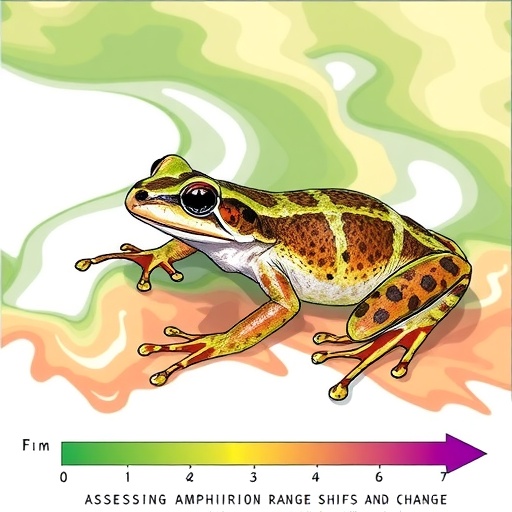
In a remarkable advancement in the field of genomics, researchers have introduced a groundbreaking method for whole mitochondrial DNA sequencing, termed MitoCOMON. This innovative approach, spearheaded by a team led by Yu Furuta, along with co-authors M. Kakita and H. Tanaka, aims to streamline the process of mitochondrial DNA analysis through an ingenious reconfiguration of primer design and long overlapping amplicon assembly techniques. The study is published in the renowned journal BMC Genomics, signifying its importance within the scientific community, particularly in the fields of evolutionary biology, genetics, and medical research.
Mitochondrial DNA (mtDNA) plays a critical role in various biological processes and is central to our understanding of human ancestry and evolutionary biology. As a remarkable carrier of genetic information, mtDNA has garnered considerable attention in recent years, with scientists investigating its implications in diseases, inheritance patterns, and evolutionary transitions. The MitoCOMON method seeks to enhance the accuracy and efficiency of mitochondrial sequencing, opening the doors to unprecedented analyses in this fascinating domain.
One of the key challenges in mitochondrial DNA sequencing has been the complexity of the mitochondrial genome itself, which exhibits a high level of heteroplasmy and variations among individuals. Traditional sequencing methods often struggle with accurately capturing this complexity, resulting in incomplete data and potential misinterpretations. The innovative approach presented in this latest research addresses these limitations by introducing long overlapping amplicon assembly, allowing for a more thorough capture of the mitochondrial genome’s intricacies.
By employing a well-designed set of primers, the researchers significantly improve the efficiency of PCR amplification, thus enhancing the overall yield of mtDNA sequences. This is particularly vital for studies focusing on rare or difficult-to-sample tissues, where obtaining sufficient genetic material can pose a significant obstacle. The integration of overlapping amplicons into the assembly process not only boosts the quality of the sequencing data but also facilitates more robust and accurate downstream analyses.
The implications of the MitoCOMON technique are profound for diverse scientific fields. Within evolutionary biology, this method allows for a more granular exploration of mitochondrial haplogroups, aiding researchers in reconstructing phylogenetic relationships and migrations of populations throughout history. In medical research, understanding the nuances of mitochondrial DNA can illuminate pathways related to mitochondrial diseases, aging, and metabolic disorders, potentially leading to novel therapeutic interventions.
Moreover, the application of MitoCOMON isn’t limited to human genetics; it bears significant utility in non-human studies as well. The methodology can be employed to assess mitochondrial DNA in a variety of species, facilitating comparative studies across evolutionary lineages. This adaptability highlights the broad applicability of their findings, promoting further interdisciplinary collaboration between geneticists, evolutionary biologists, and conservationists alike.
While the research is undeniably exciting, it also raises questions regarding the reproducibility and scalability of the MitoCOMON method. To ensure its widespread adoption, future studies will need to address how this approach performs across diverse biological contexts and varying sample types. The next steps in this research will likely focus on validating the technique in larger cohorts and different biological materials, which could solidify its status as a pivotal tool in mitochondrial genomics.
As with many advancements in genomic technology, the ethical implications associated with mitochondrial DNA studies cannot be overlooked. Concerns surrounding genetic privacy, especially in relation to mitochondrial inheritance patterns that can reveal vital ancestral insights, necessitate careful consideration. The scientific community must engage in robust dialogues to establish ethical guidelines as these technologies evolve and become more accessible to researchers and clinicians.
The publication of this study serves as a reminder of the powerful intersection of technology and biology. As researchers continue to refine methods such as MitoCOMON, they pave the way for an enriched understanding of the human genome and its connection to health, disease, and evolution. Such advancements in sequencing technology are not merely incremental; they represent revolutionary shifts that could redefine how we approach genetic research moving forward.
The researchers’ innovative spirit shines through in the technical efficacy demonstrated in their work. Their methodology mirrors the growing trend of enhancing genetic analysis through sophisticated techniques, underscoring the necessity to adapt and evolve as our understanding of genomics deepens. With the advancements in automation and high-throughput sequencing technologies, MitoCOMON provides a robust framework not only for current research but also for future innovations in the realm of biological sciences.
As scientific inquiry continues to push the boundaries of what is possible within genome research, MitoCOMON stands as a testament to the transformative potential of meticulous planning and innovative thought. The research highlights the collaborative effort required to address the intricacies of genetic data, reinforcing the idea that groundbreaking discoveries are often forged through teamwork and shared expertise.
In conclusion, the development and introduction of the MitoCOMON technique represent a significant leap forward in our ability to analyze mitochondrial DNA effectively and efficiently. By streamlining the amplification and assembly processes required for whole mtDNA sequencing, this method equips scientists with a powerful tool to probe the depths of mitochondrial biology, paving the way for future discoveries that could reshape our understanding of genetics and its implications for health and disease.
As this research gains traction beyond academia, it may inspire budding scientists and established researchers alike to delve deeper into mitochondrial studies. The competitive nature of the field ensures that the evolution of methodologies will continue, fostering an environment where collaboration, innovation, and ethical considerations remain at the forefront of scientific advancement.
This exciting research represents more than just a methodological development; it highlights how far we have come in our quest to decode the intricate tapestry of the mitochondrial genome. By fostering breakthroughs in our understanding of mtDNA, the scientific community takes yet another step toward unlocking the enduring mysteries of life itself, fueling further inquiries into the interplay between genetics, evolution, and health.
Subject of Research: Whole mitochondrial DNA sequencing
Article Title: MitoCOMON: whole mitochondrial DNA sequencing by primer design and long overlapping amplicon assembly
Article References:
Furuta, Y., Kakita, M. & Tanaka, H. MitoCOMON: whole mitochondrial DNA sequencing by primer design and long overlapping amplicon assembly.
BMC Genomics 26, 787 (2025). https://doi.org/10.1186/s12864-025-12010-0
Image Credits: AI Generated
DOI: 10.1186/s12864-025-12010-0
Keywords: Mitochondrial DNA, sequencing, genomics, primer design, amplicon assembly, evolutionary biology, genetic research
Tags: accuracy in mitochondrial sequencingadvanced sequencing methodologiesBMC Genomics publicationcustom primer design techniquesevolutionary biology applicationsgenetics research advancementsheteroplasmy in mtDNAmedical research implicationsmitochondrial DNA inheritance patternsmitochondrial genome analysisMitoCOMON methodwhole mitochondrial DNA sequencing




